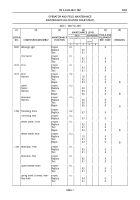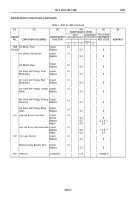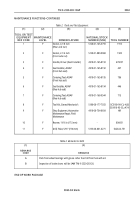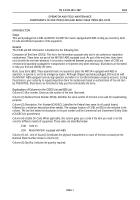TM-9-2320-283-13-P - Page 369 of 400
TM 9-2320-283-13&P
0062
0062-3
MAINTENANCE FUNCTIONS–CONTINUED
NOTE
The following definitions are applicable to the "repair"
maintenance function:
Service. Inspect, test, service, adjust, align, calibrate, and/or
replace.
Fault location/troubleshooting. The process of investigating and
detecting the cause of equipment malfunctioning; the act of
isolating a fault within a system or Unit Under test (UUT).
Disassembly/assembly. The step-by-step breakdown (taking apart)
of a spare/functional group coded item to the level of its least
component, that is assigned an SMR code for the level of
maintenance under consideration (i.e., identified as maintenance
significant).
Actions. Welding, grinding, riveting, straightening, fastening,
machining, and/or resurfacing.
11.
Overhaul. That maintenance effort (service/action) prescribed to restore an item to a completely
serviceable/operational condition as required by maintenance standards in appropriate technical
publications. Overhaul is normally the highest degree of maintenance performed by the Army.
Overhaul does not normally return an item to like new condition.
12.
Rebuild consists of those services/actions necessary for the restoration of unserviceable equipment to
a like new condition in accordance with original manufacturing standards. Rebuild is the highest
degree of material maintenance applied to army equipment. The rebuild operation includes the act of
returning to zero those age measurements (e.g., hours/miles) considered in classifying Army
equipment/components.
Explanation of Columns in the MAC
Column (1) Group Number. Column (1) lists Functional Group Code (FGC) numbers, the purpose of which
is to identify maintenance significant components, assemblies, subassemblies, and modules with the Next
Higher Assembly (NHA).
Column (2) Component/Assembly. Column (2) contains the item names of components, assemblies,
subassemblies, and modules for which maintenance is authorized.
Column (3) Maintenance Function. Column (3) lists the functions to be performed on the item listed in
column (2). (For a detailed explanation of these functions refer to “Maintenance Functions” outlined above).
Back to Top




















